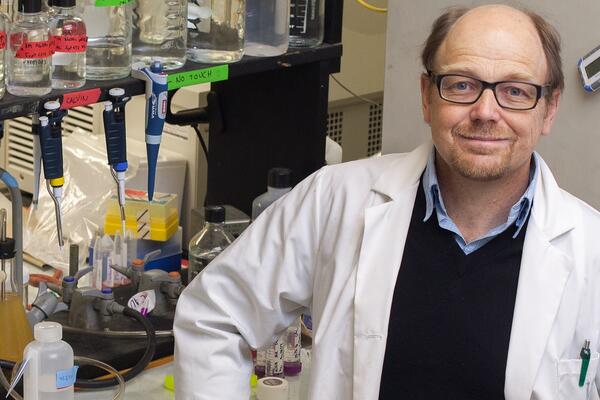
UWaterloo opens new aquatic threats research facility to study the impact of climate change on fish stress
The new multimillion-dollar facility will allow researchers to bridge the gap between lab and fieldwork

The new multimillion-dollar facility will allow researchers to bridge the gap between lab and fieldwork
By Media RelationsFish have a lot to stress about right now. This could mean serious problems for the future of aquaculture and the fish on your plate.
The new Waterloo Aquatic Threats in Environmental Research (WATER) facility at the University of Waterloo aims to simulate and research aquatic stressors and threats so that we are better prepared to prevent current and future problems.
“Many environmental changes are impacting both wild and aquaculture fish,” said Paul Craig, a professor in the Department of Biology and one of the lead researchers in the new WATER facility. “Our new multimillion-dollar facility will allow researchers to bridge the gap between lab and fieldwork by studying the impact of climate-related stressors in a controlled environment.”
The WATER facility, which is one of the largest aquatic test facilities in Ontario, has the capability of studying a wide range of aquatic organisms, from Canadian cold-water fish to tropical fish and amphibians. The facility is also equipped to trace the multi-generational effects different environmental stresses may have on aquatic life over multiple lifespans.
New technologies, including a pathogen challenge area, will allow researchers to study the impact of disease agents and contaminants of concern on aquaculture, expose populations to controlled climate-related stressors like water temperature and oxygen saturation levels, and measure the effects of human-centric pollution such as wastewater on aquatic ecosystems.
The new WATER facility also prioritizes sustainability by reducing water usage by 90 per cent compared to the groundwater flow through system that was previously used in aquatic research at Waterloo.
“With the opening of the WATER facility, we are looking to expand our research areas and expertise, and invite researchers across Canada in areas water research and aquatic conservation to collaborate with us to carry out new and innovative research,” Craig said.
Waterloo researchers involved in the development and research in the WATER facility include Craig, Brian Dixon, Barb Katzenback, Rebecca Rooney, Mark Servos, and Heidi Swanson, all professors in Waterloo’s Department of Biology. The WATER facility was a two-year, $5.2 million project undertaken by the Faculty of Science and is now active for research.

Read more
Here are the people and events behind some of this year’s most compelling Waterloo stories

Read more
Discovery of a thick atmosphere on a lava world reshapes our understanding of rocky exoplanets

Dr. Brian Dixon, professor of biology at the University of Waterloo says there is a link between cold weather and getting sick. (University of Waterloo)
Read more
Waterloo researcher shares why we get sick when the mercury dips
The University of Waterloo acknowledges that much of our work takes place on the traditional territory of the Neutral, Anishinaabeg, and Haudenosaunee peoples. Our main campus is situated on the Haldimand Tract, the land granted to the Six Nations that includes six miles on each side of the Grand River. Our active work toward reconciliation takes place across our campuses through research, learning, teaching, and community building, and is co-ordinated within the Office of Indigenous Relations.